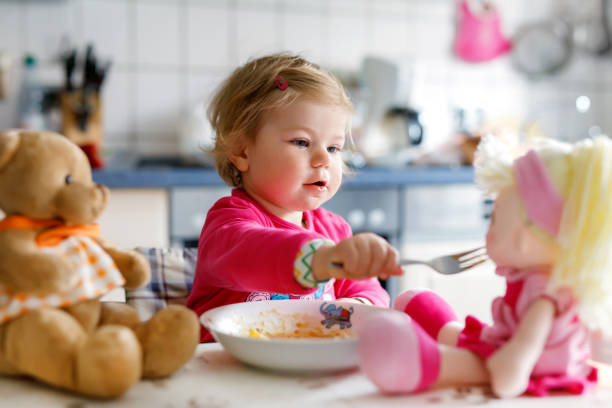Artificial intelligence dolls have revolutionized the doll aisle during the holiday season. The dolls combine a physical toy, a mobile phone, and an app or technology sensor to simulate intelligence.
As an education researcher who studies popular toys, these dolls make me think about the direction in which human progress is heading. What does it mean to children’s growth when they confuse their natural bodies with machines?
Take Luvabella. She’s supposedly a “must-have toy” for this holiday season. Luvabella has an astonishingly lifelike expression, with her lips, cheeks, and large eyes blinking. She responds to you, giggles when her toes are tickled, plays peek-a-boo with you, babbles, and learns words. She’s a pretty happy baby and is low-maintenance.
Luvabella may be a natural evolution in dolls for kids — from beauties who look like real people to dolls with eyes that open and shut when standing or lying down to dolls that “drink” out of a bottle, pee and talk.
She could be the natural progression in technological development: from robotic vacuum cleaners to self-driving cars and automated weapon systems.
When children are involved, concerns about their safety and well-being may arise. Is Luvabella problematic, even dangerous?
Emotional Attachment in children
The problem is not that the toy can be hacked. The “My Friend Cayla” and “Hello Barbie” were pulled off the shelves due to their ability to record and transmit online conversations and locations of children with these dolls.
Luvabella doesn’t have internet access, so she’s not a privacy threat.
These tech toys don’t affect children’s creativity either. Early childhood educators worry that tech toys will limit children’s imaginations. But the children’s dreams are pretty robust, and an AI doll will unlikely hinder their pretending abilities.
Children form emotional attachments with their stuffed animals and seek comfort from them in times of stress. The English psychoanalyst and pediatrician Donald Winnicott emphasized the importance of a child’s emotional attachment to their ” Transitional Object” to lessen stress when separating from parents.
The children instill warmth and comfort into their cuddly toys, dolls, and teddy bears. Children give their action figures life by giving them voices and motions.
Most of us consider that pretending a toy, or a soothing object, is real — as Calvin did with his toy Hobbes tiger– a healthy way to grow up. This is what childhood should be. It’s a kind of childhood magic that makes us feel good as adults. A robot doll does not.
Uncanny deception
The child is in control of the relationship with a doll. The child is responsible for deciding what the toy will give back. Adults know that the cuddly toy or teddy is not alive. On a certain level, the child also knows.
Around the age of 3, children learn to differentiate between real and unreal. This helps them to engage in imaginative play that is rich with development. This ability comes with clarity.
The child, and sometimes the adult, may not know if the robot doll is alive when it responds. German psychiatrist Ernest Jentsh described the term “uncanny” in 1906 as a feeling of confusion between a human and an automaton.
Should objects show empathy?
Some robotic assistive technologies are fascinating. For example, clothing increases the wearer’s strength, or robots that can help someone move from a bed to a wheelchair.
It is not a good idea to expect a robot to be a companion, to care for someone, or to make them feel less lonely (see ” Care-O-bot“). It raises questions about what robot ethicists term “presence.”
Should an object emulate sentient presence, comfort, or even empathy?
Luvabella shares many of the same features as Paro, a robot seal programmed to offer companionship to isolated older adults. This small, automated animal mimics pet therapy by responding to voice commands and being stroked.
Uncharted territory
Toy manufacturers are pressured to produce artificial intelligence toys to keep up with the latest technological and societal trends and maintain profitability in a highly competitive industry. It’s not their job to think about the human implications.
Although the technology hasn’t yet reached a point where it can replace human contact — at least with Luvabella, anyway — the direction in which technological development is heading is clear: Artificial Intelligence is creating more convincing simulations of human presence.

